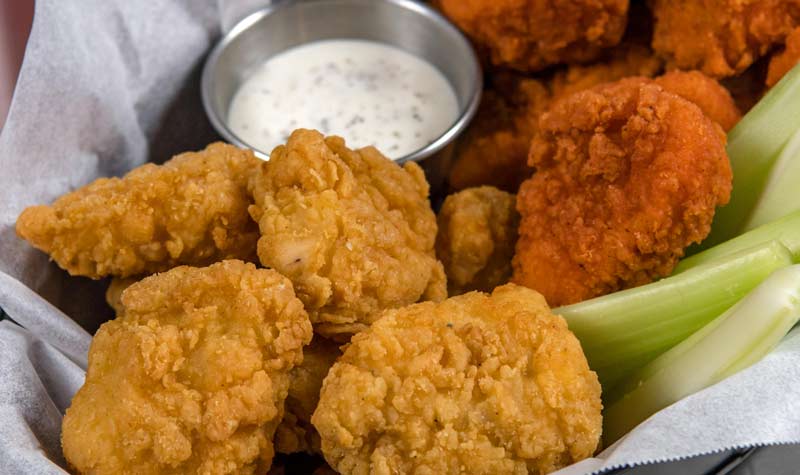Fast casual emerged as a key foodservice segment just 11 years ago, yet its sales performance hovers well above other sectors. Over the past year, sales for fast casual restaurants grew 8 percent; by comparison, the average among the top 500 U.S. restaurant companies slipped to 3.3 percent.1 What’s more, six of the top-10 fastest-growing U.S. restaurants are fast casuals.2
Consumer interest in quick, high-quality, fresh, customizable and affordable fare clearly facilitated the rise of this niche segment. Yet fast casuals continue to morph, especially in light of technology advances, third-party delivery and evolving menu interests.
Convenience Requires Modification
The desire for speed and convenience has driven even some of the oldest, more established fast casuals to add drive-thrus. Panera Bread Co. and Fazoli’s were among the first to do so, but countless others—Chipotle Mexican Grill and Corner Bakery Cafe among them—have now made the investment as well. But consumers’ desire for customization and the speed and convenience of the drive-thru aren’t always compatible, so some fast casual chains have tinkered with their menu strategy to find a happy medium. Pie Five Pizza, for example, whittled down its menu to eliminate more complicated signature pizzas, and its drive-thru menu board doesn’t list every ingredient available.3
The demand for (and maturing of) third-party delivery options is also driving fast casuals— especially pizza operations—to mimic their competitors. The big pizza chains are now losing their delivery monopoly. Blaze Fast-Fire’d Pizza recently partnered with DoorDash for 14-inch pizza delivery, announced via a national TV ad campaign. MOD Pizza has entered into a delivery partnership with DoorDash as well.4
Younger Generations’ Food Ideals
Millennials are credited with inspiring the movement within the food and foodservice industries for greater ingredients transparency and wholesomeness—a hallmark of fast casuals. Flavor and function (think superfoods) will continue to drive segment operators to evolve their menus, given that Gen Z is continuing the demand for transparency and no artificial ingredients.5
Fast casual pioneer Panera continues to evolve with the generational times. Among recent achievements, the company has added third-party delivery; conducted a marketing campaign aimed at food transparency; piloted a “dinner-centric” menu featuring flatbreads, bowls and seasonal sides; and recently added grain-based bowls to its lineup.
Chipotle has also been on a brand-update campaign. Since hiring CEO Brian Niccol in early 2018, the company has launched a loyalty program; added carne asada as an LTO premium protein option; and introduced delivery through a partnership with DoorDash. Even the company’s tagline has been refreshed—to “Chipotle, for Real”—to reflect its commitment to food made with real ingredients.
Future Drivers
The fast casual segment fits an enviable niche that will continue to draw innovation from around the foodservice industry. Operators of full service establishments have even opened or invested in fast casual brands over the past several years. Famed chef Daniel Boulud, for example, helped four MIT students create Boston-based Spyce, a bowl-centric fast casual that uses robotic technology. And Cracker Barrel Old Country Store just purchased Maple Street Biscuit Co., a counter-service fast casual chain known for scratch cooking.6
As fine-dining and celebrity chefs explore ways to make their elevated food more accessible to the fast casual masses, look for the development of more limited service outlets. Food halls, which are fast casual by nature, present a still-emerging opportunity. Industry prognosticators expect the number of food halls to quadruple, in fact—from 120 in 2016 to 450 in 2020.7
“Marketplace fast casual” is the term Gen Z and millennial specialty research firm Y-Pulse uses to describe food halls and farmers markets that appeal especially to these demographics and their desire for entertainment. Like single fast casuals, food hall fast casual operations feature open kitchens and freshly prepared food that can be customized and conveniently ordered via mobile apps or in-store kiosks.8
Watch for fast casual’s popularity to continue, especially if these operations evolve their menus to focus on plant-based proteins, dietary preferences and lifestyles, and nutritious foods with exotic and bold flavors.9 Other segments are learning from fast casual’s success with the combination of affordable, convenient and customizable quality fare, which can only turn into a win for the industry and the consumer.
Sources:
- Maras, Elliot, “Is the Honeymoon Over for the Fast Casual Segment?”, Fast Casual, July 8, 2019
- Ravneberg, Christi, “Top 10 Fastest-Growing Restaurant Chains,” Nation’s Restaurant News, May 21, 2019
- Hardy, Kevin, “In Race for Convenience, Fast Casuals Embrace the Drive Thru,” QSR Magazine, October 2019
- Dawson, Gloria, “Blaze Rolls Out Delivery, Bigger Pies and a New Campaign,” Nation’s Restaurant News, Sept. 9, 2019
- “Flavor, Function, and Authenticity Over Brand and Hype,” The NPD Group, Jan. 24, 2018,
- Luna, Nancy, “Cracker Barrel Buys Maple Street for $36M,” Nation’s Restaurant News, Oct. 11, 2019
- Capps, Charlene, “Focus Trends: Fast Casual Restaurants and Food Halls,” Retail Strategies, July 31, 2019
- “The Next Evolution in Dining: Marketplace Fast Casual,” Convenience Store News, Sept. 12, 2019
- Weaver, Scott, “Chef Chatter: 4 Menu Trends Fast Casual Operators Should Master,” Fast Casual, July 23, 2019

